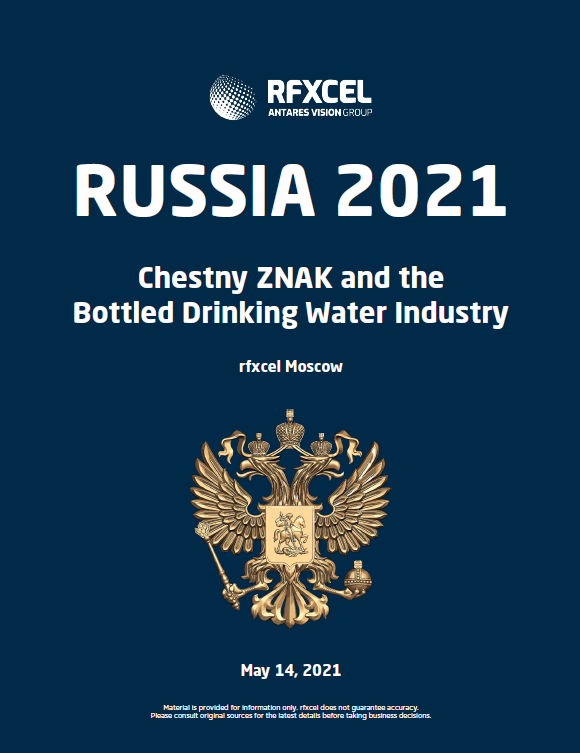Russia Chestny ZNAK and the Bottled Drinking Water Industry

Russia Chestny ZNAK and the Bottled Drinking Water Industry: How to achieve track and trace compliance in Russia + serialization and aggregation for global players.
Russia’s National Track and Trace Digital System, Chestny ZNAK, covers a wide range of products and industries, including bottled drinking water. The pilot for bottled drinking water began on April 1, 2020, and is scheduled to end on June 1, 2021.
Russia’s regulations have strict standards for serializing and tracing all products manufactured in or imported into Russia. For example, products must be labeled with unique cryptographic (“crypto”) codes. To prepare your products for the Russian market, you must understand the Chestny ZNAK regulations and choose a solution that will fulfill your specific application requirements. This short white paper looks at the principles and approaches for the process of marking and tracing bottled drinking water. It will help you understand Chestny ZNAK’s critical implementation and technological aspects for the bottled drinking water industry.
rfxcel is an official integration, software, and tested solution partner with the Center for Research in Perspective Technologies (CRPT), which manages Chestny ZNAK. We’re also accredited as IT Company by Russia’s Ministry of Digital Development, Communications, and Mass Media. Today, companies are using our track and trace solutions to achieve and maintain compliance. rfxcel transforms business value with a digital supply chain and by helping companies accelerate the process for meeting Russia’s regulatory requirements. As your partner, we’ll safeguard your products while ensuring you remain compliant with Chestny ZNAK.
Bottled Drinking Water Pilot Milestones and Goals
- Economic agents order 2D Data Matrix codes and apply them to finished products.
- All information transferred electronically to Chestny ZNAK.
- Aggregation of products in shipping packages and aggregation of codes for each unit in the aggregation.
- Marked products enter circulation.
- Track and trace of products in the supply chain and Universal Transfer Documents (UTDs) to record the transfer of codes between stakeholders.
- Goods withdrawn from circulation at the time of purchase via communication with point-of-sale cash registers and scanning devices.

